Art Nouveau wood & wicker enameled-painted tray, 1931
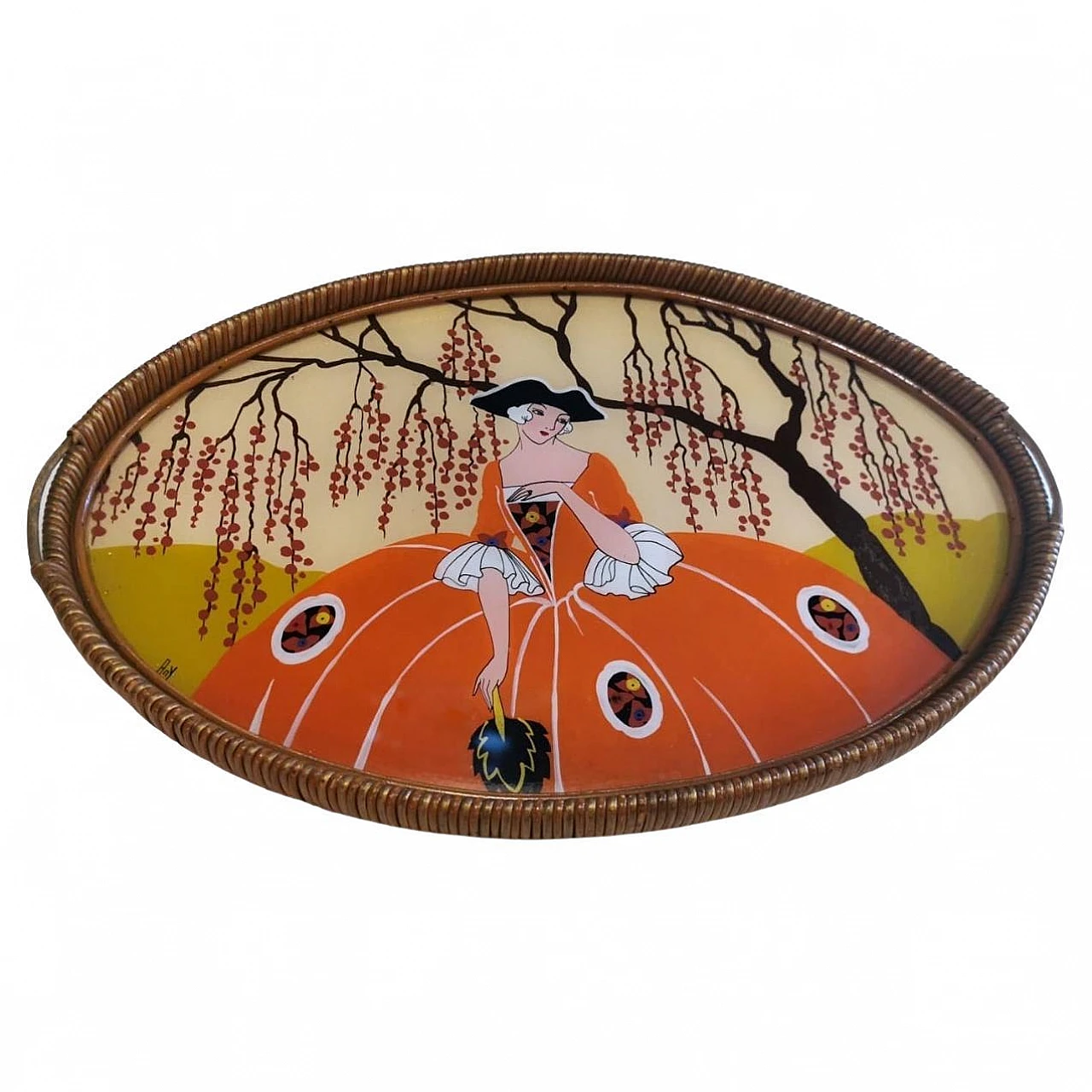
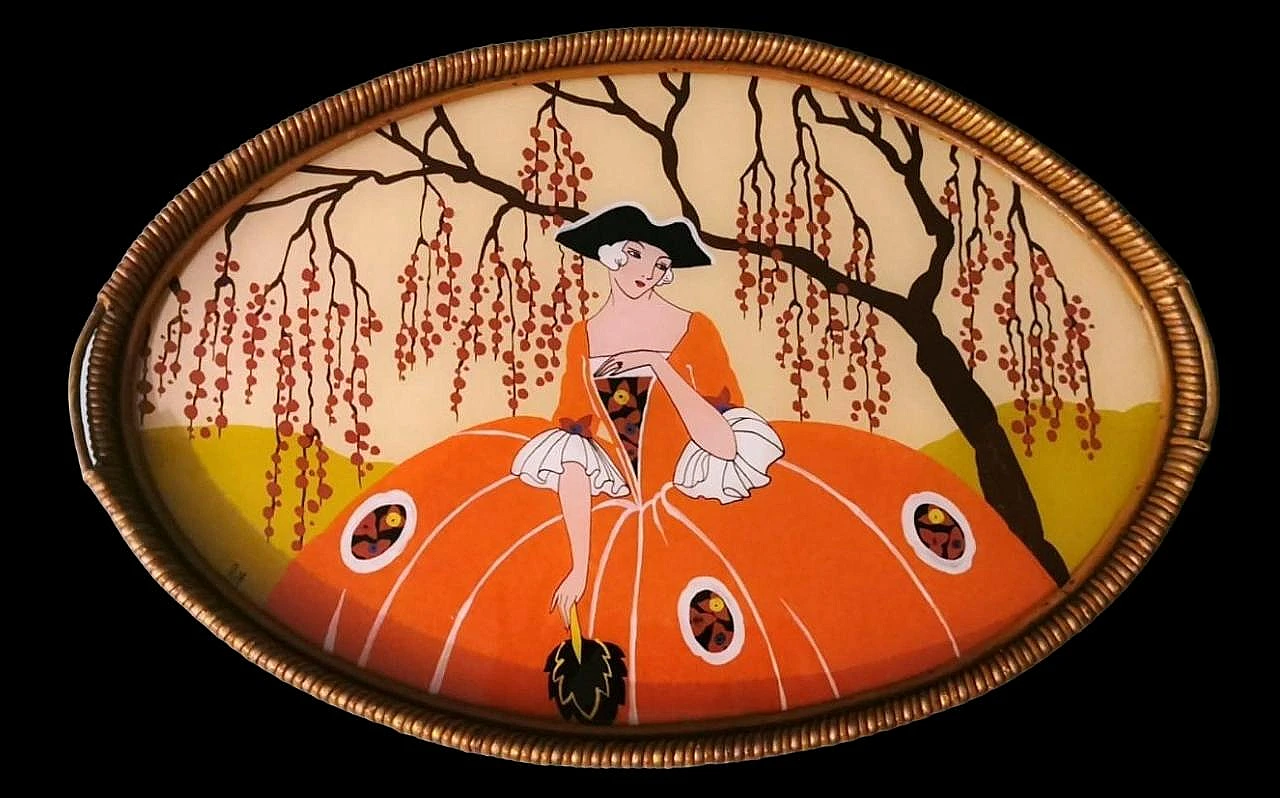
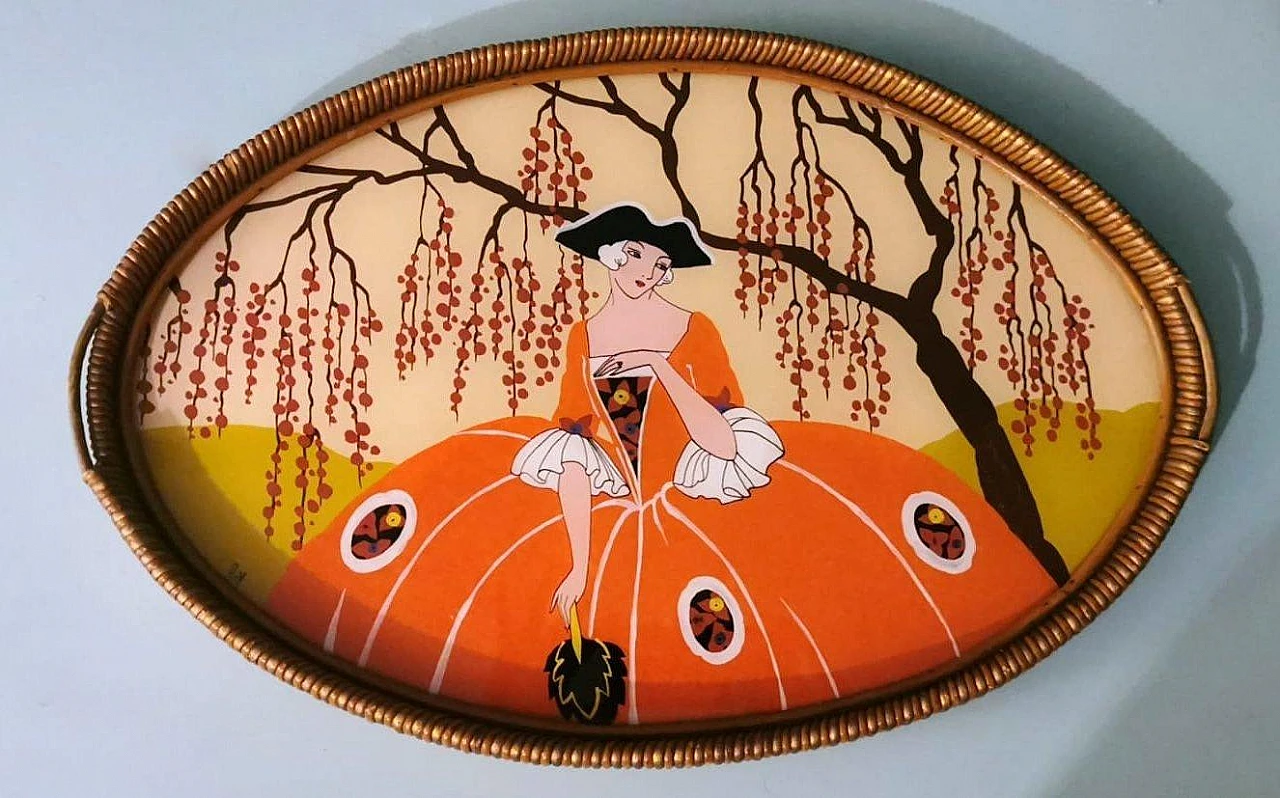
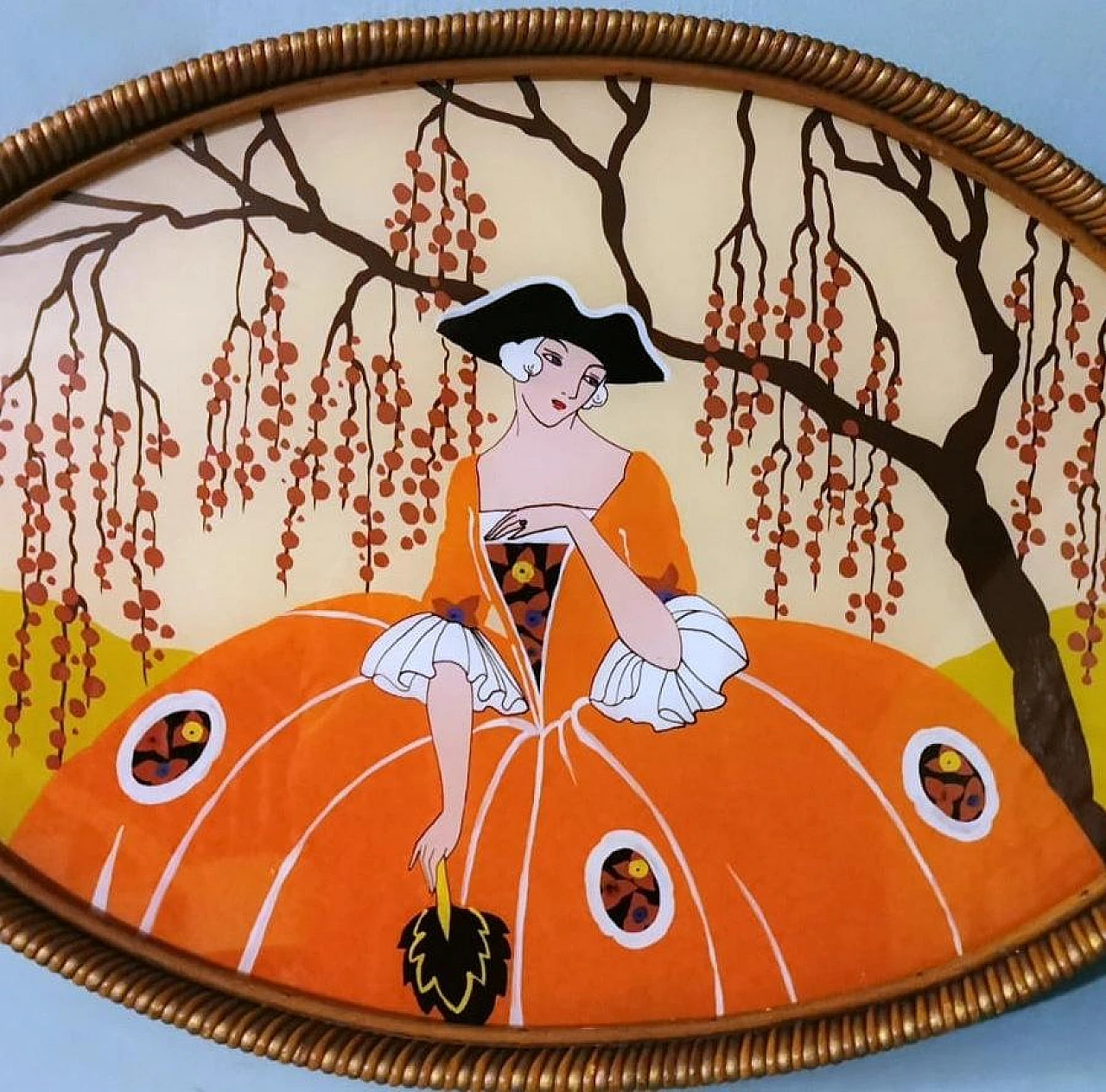
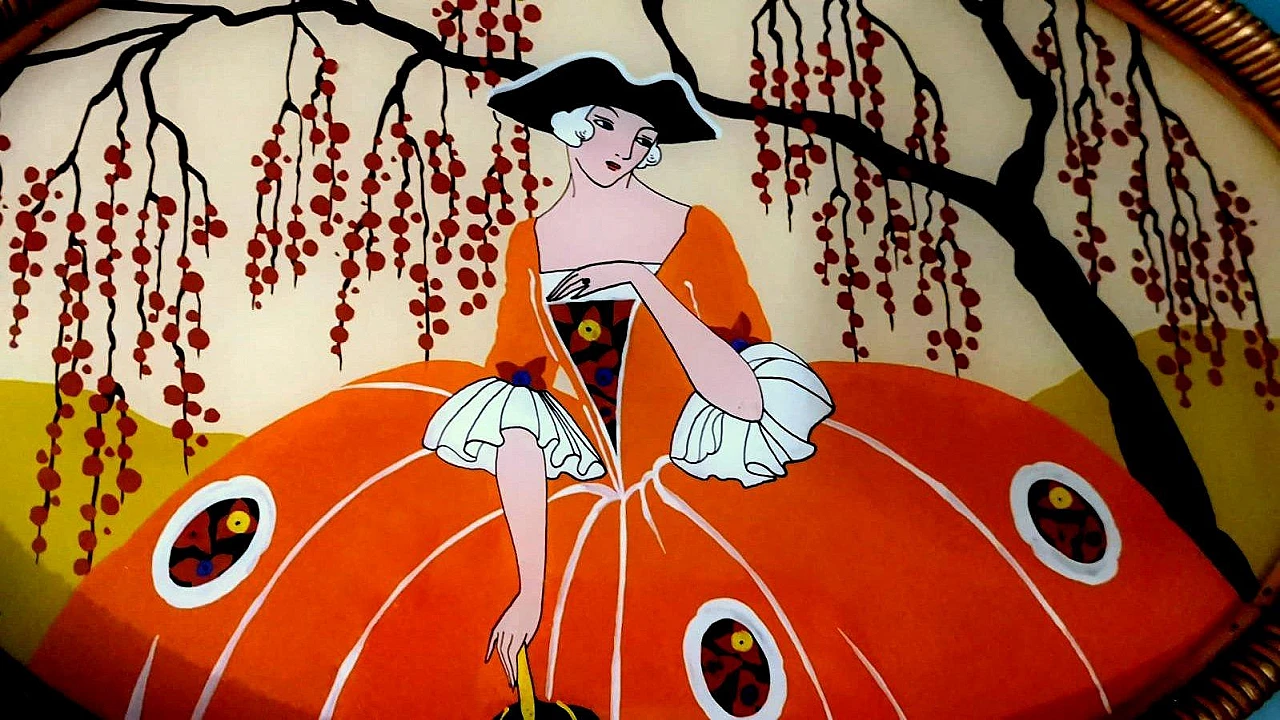
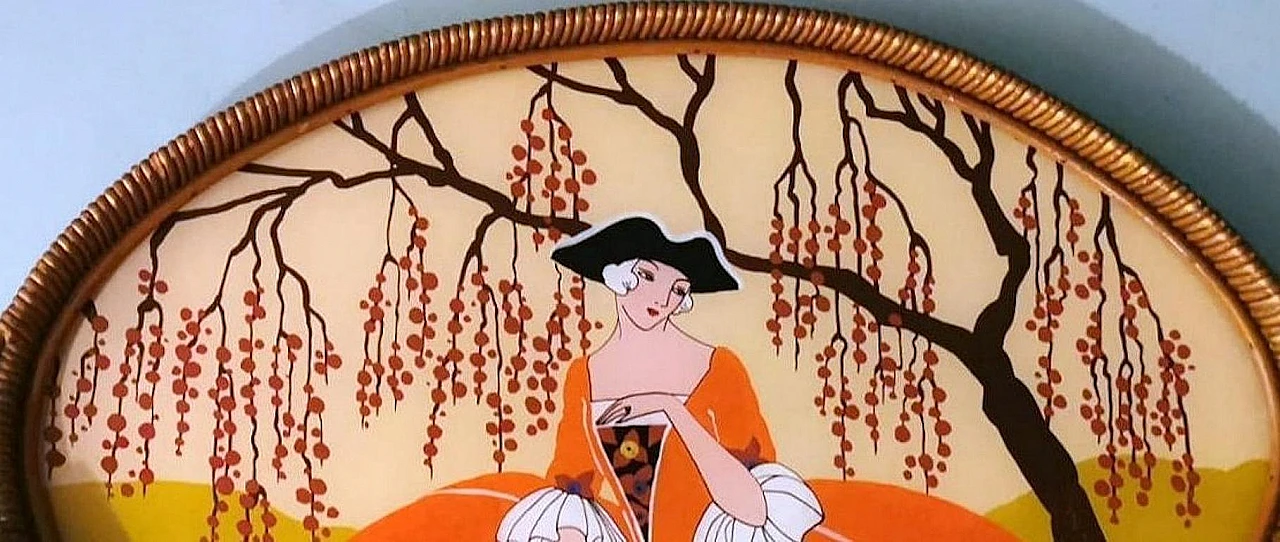
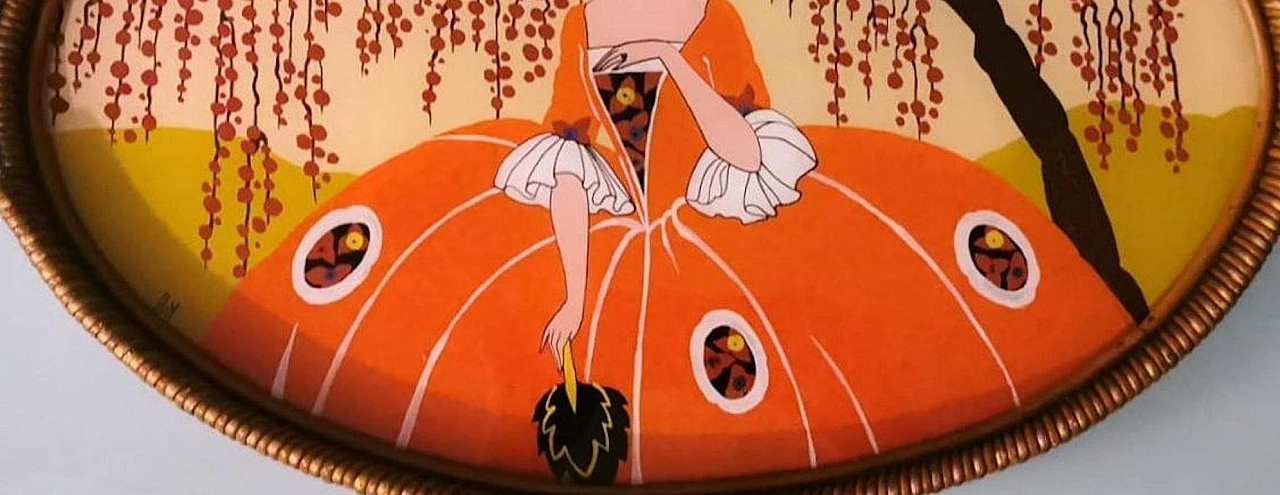
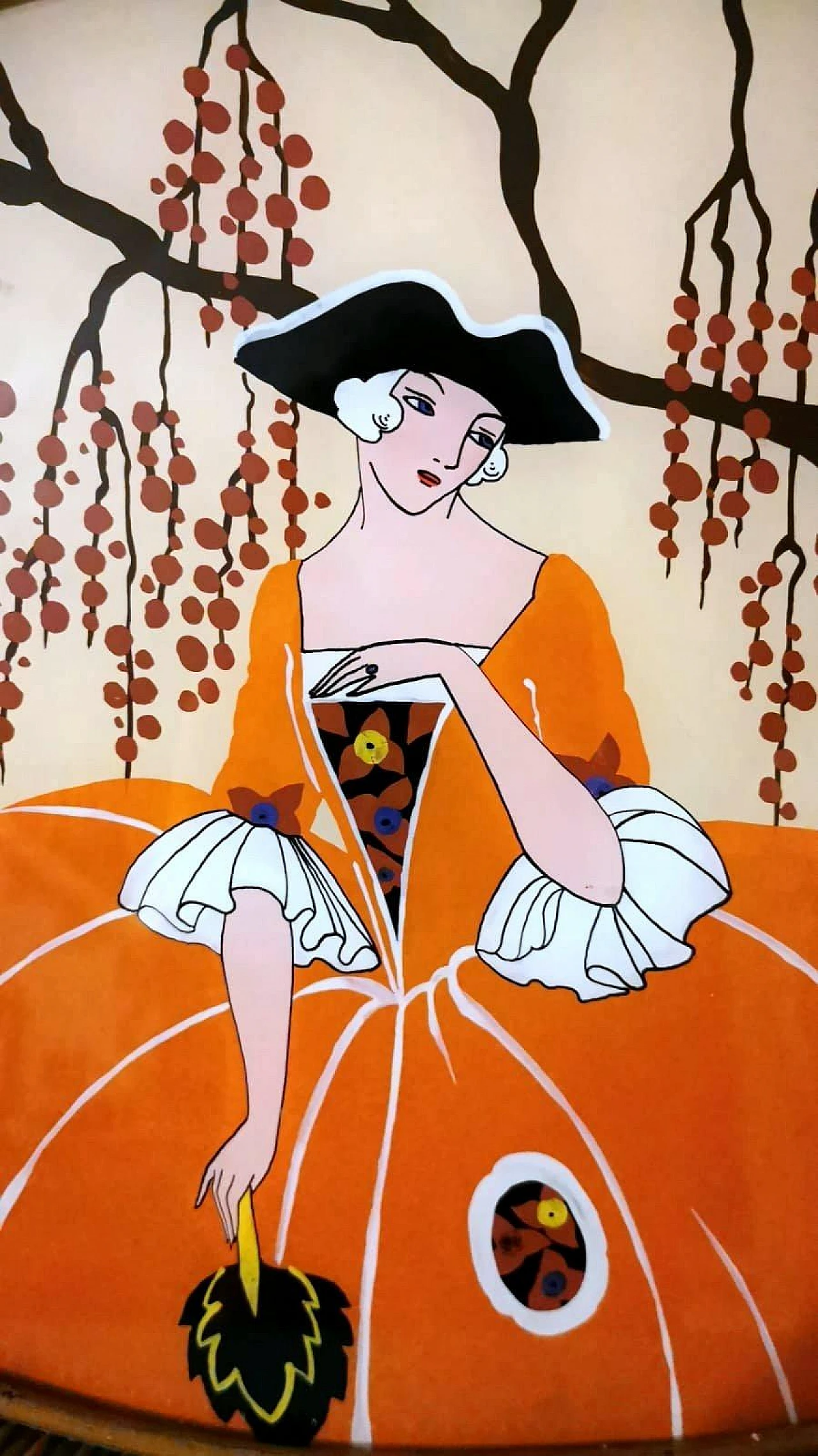
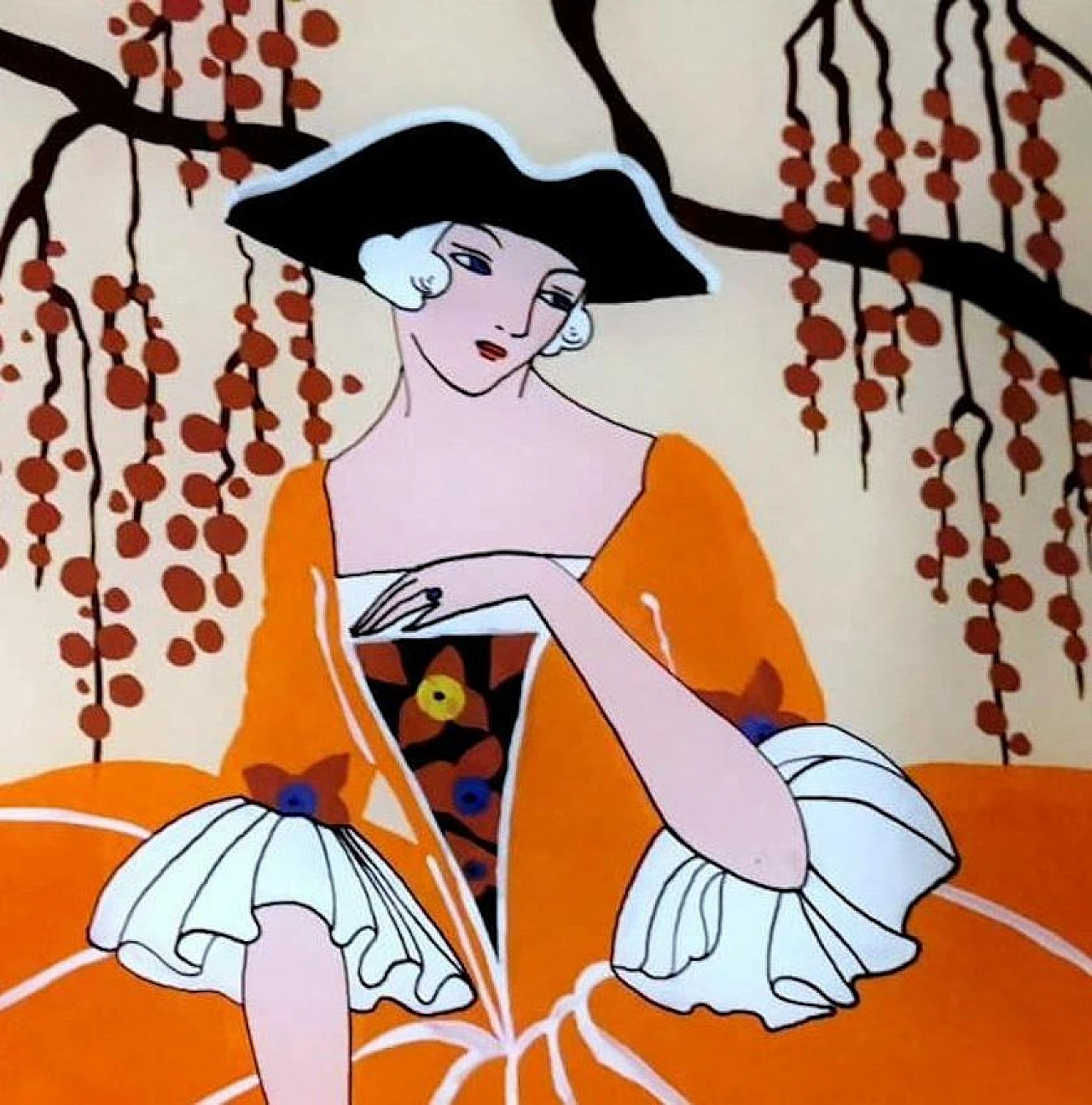
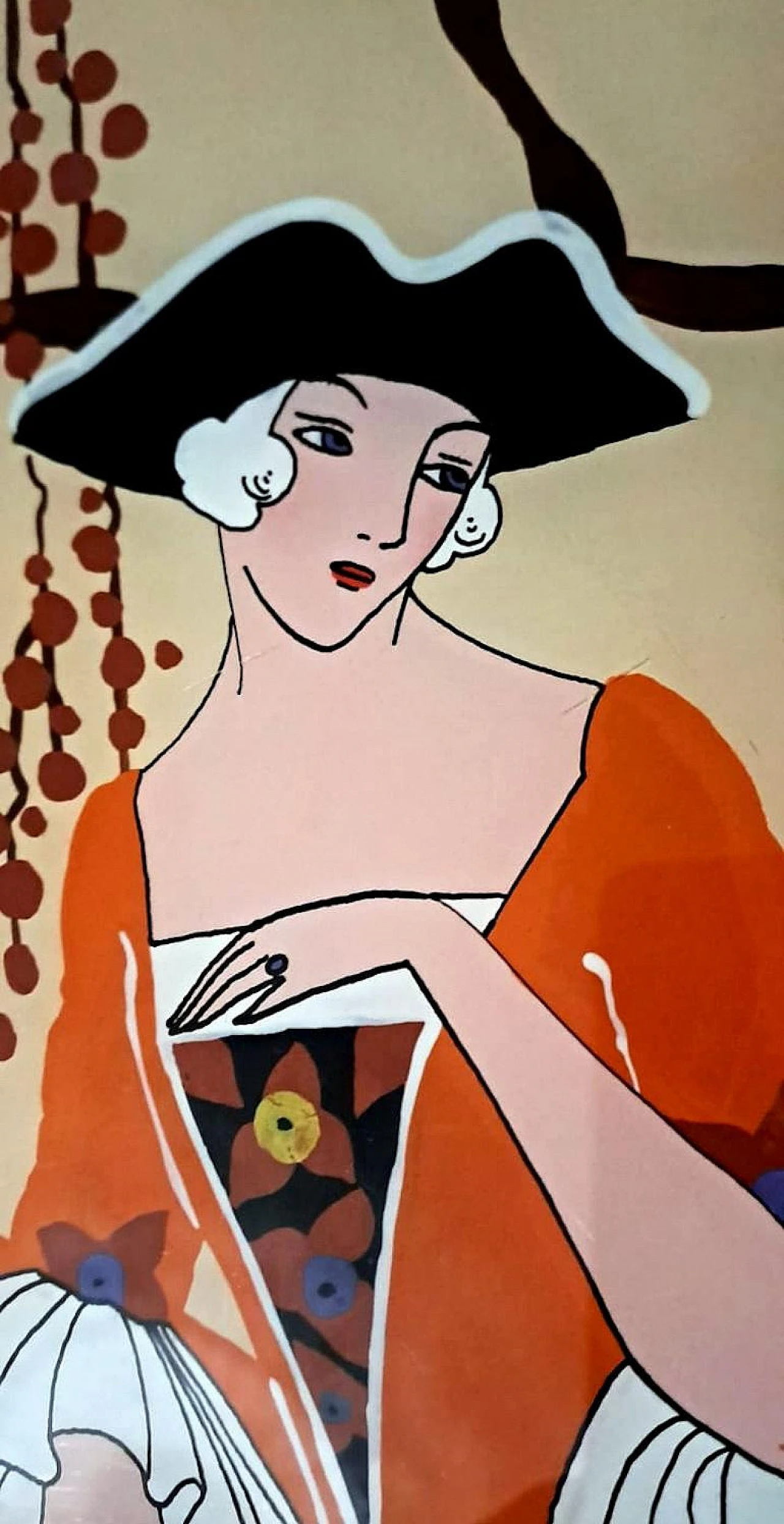
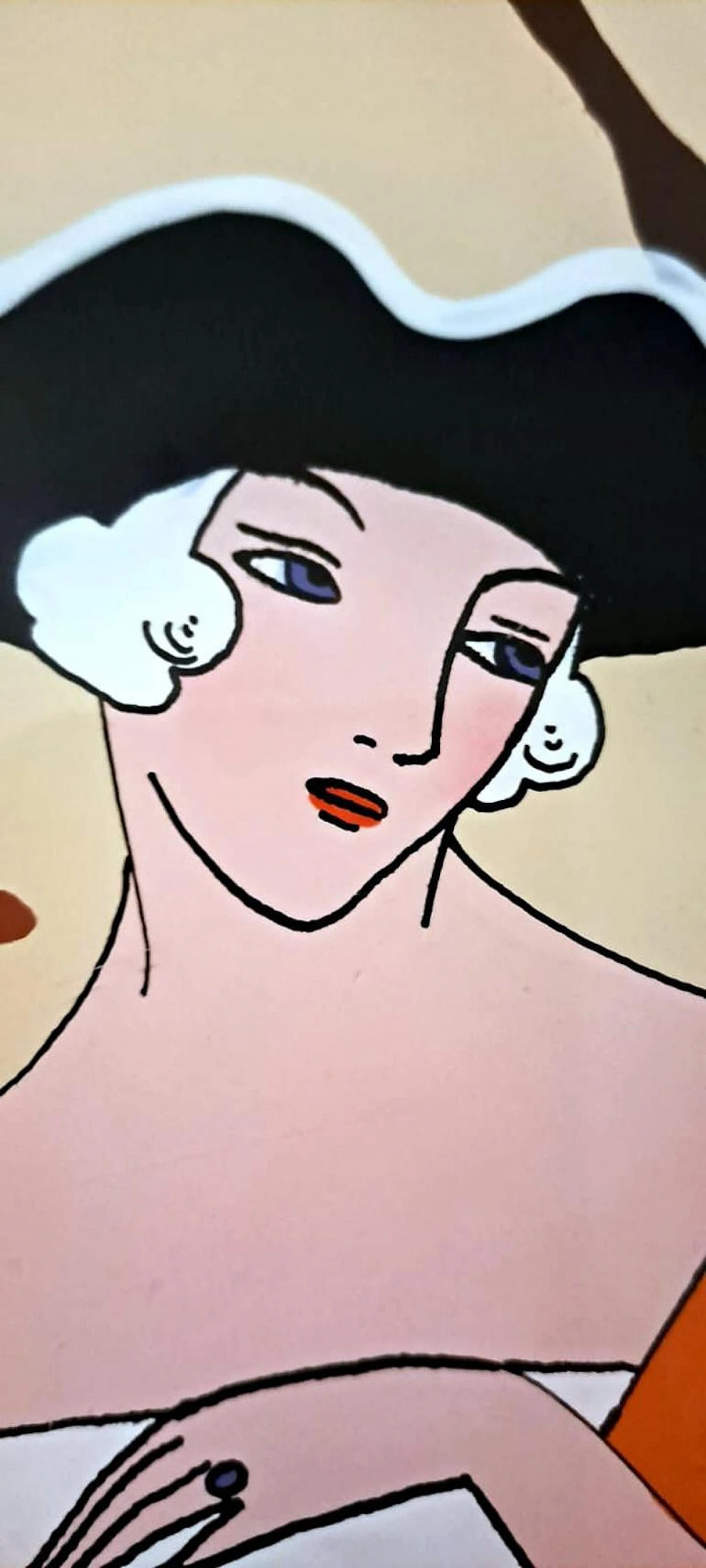
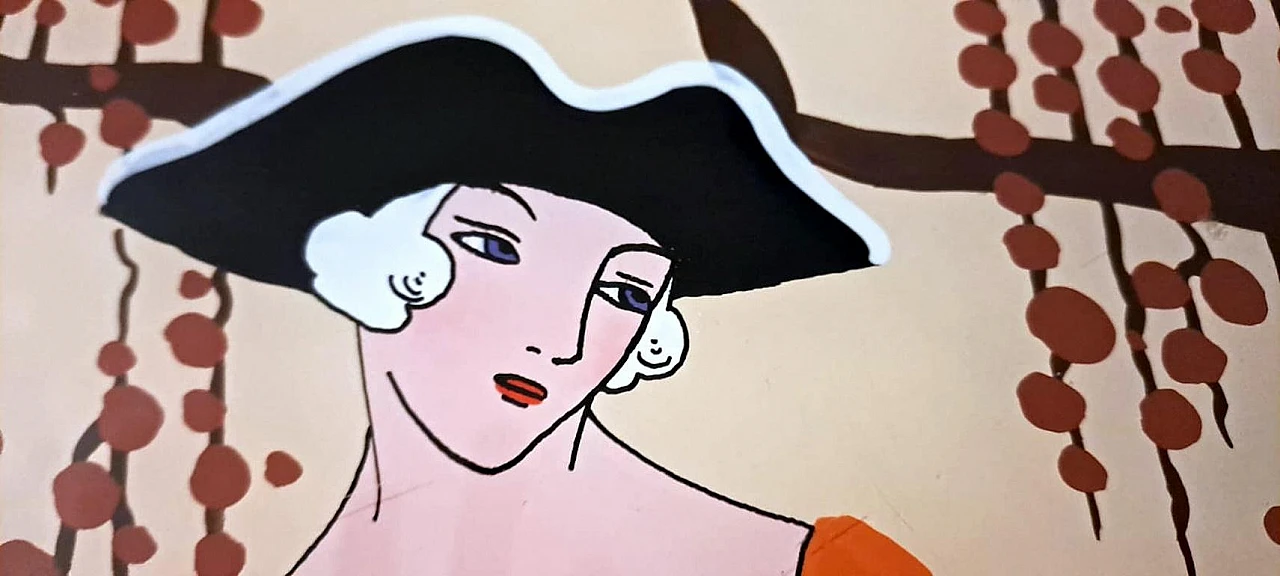


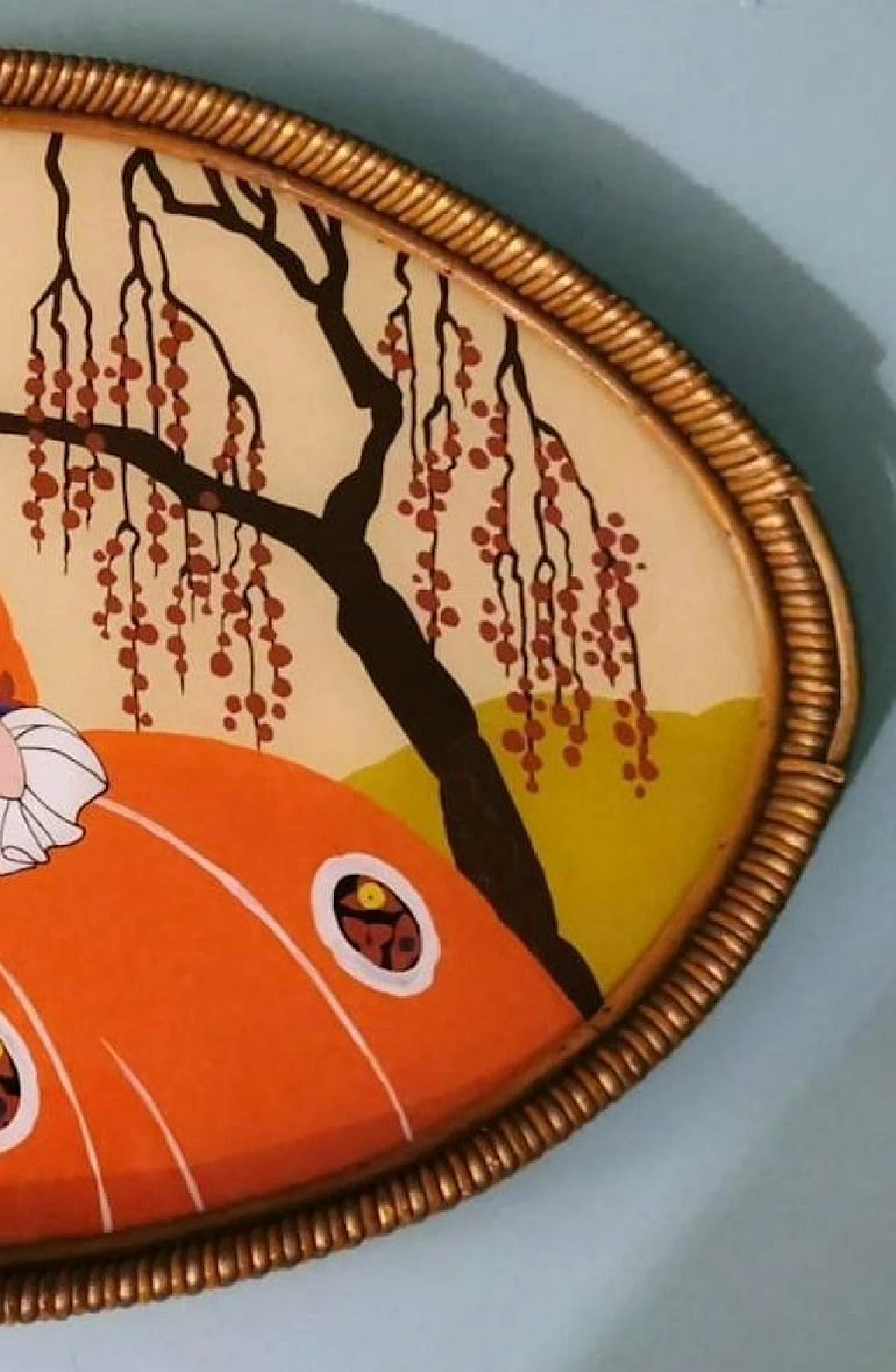

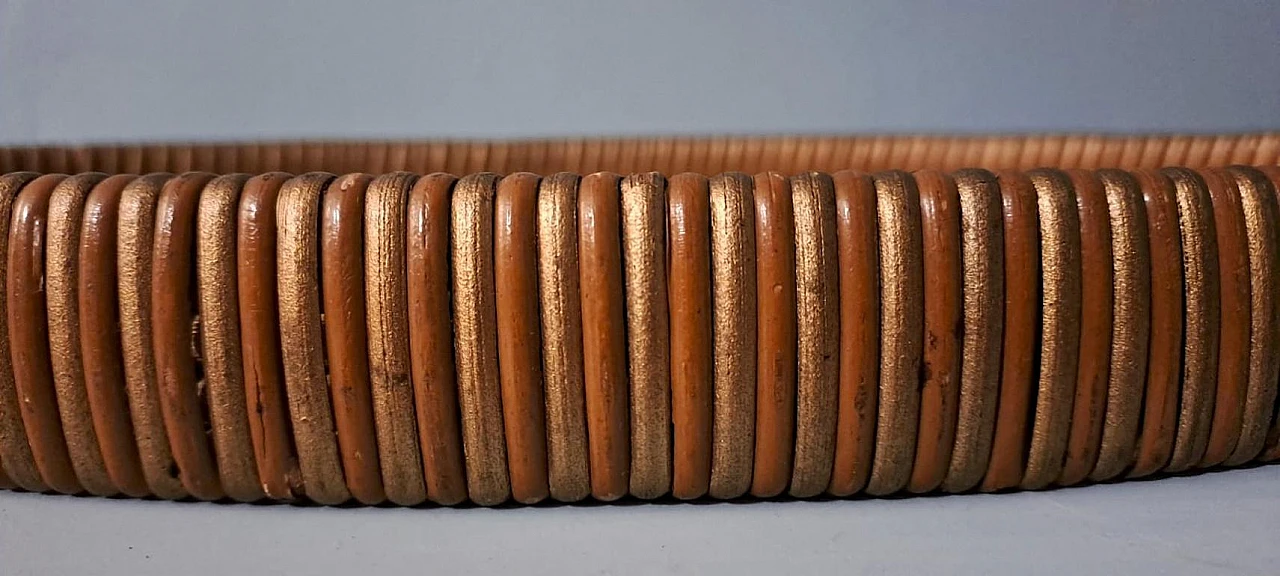
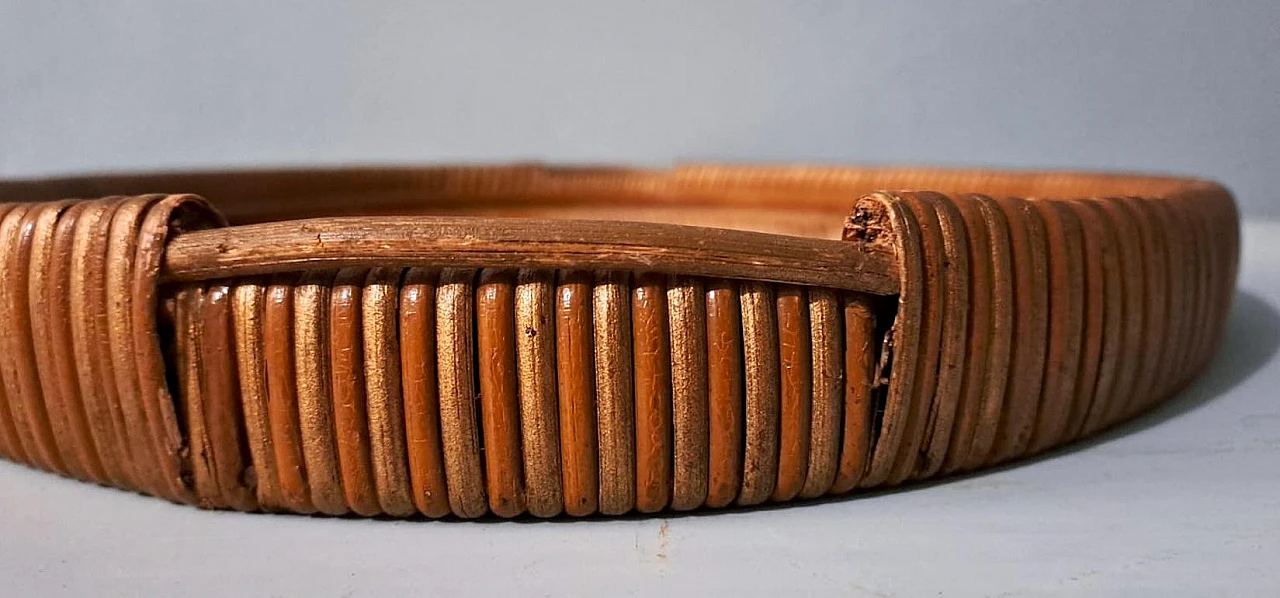
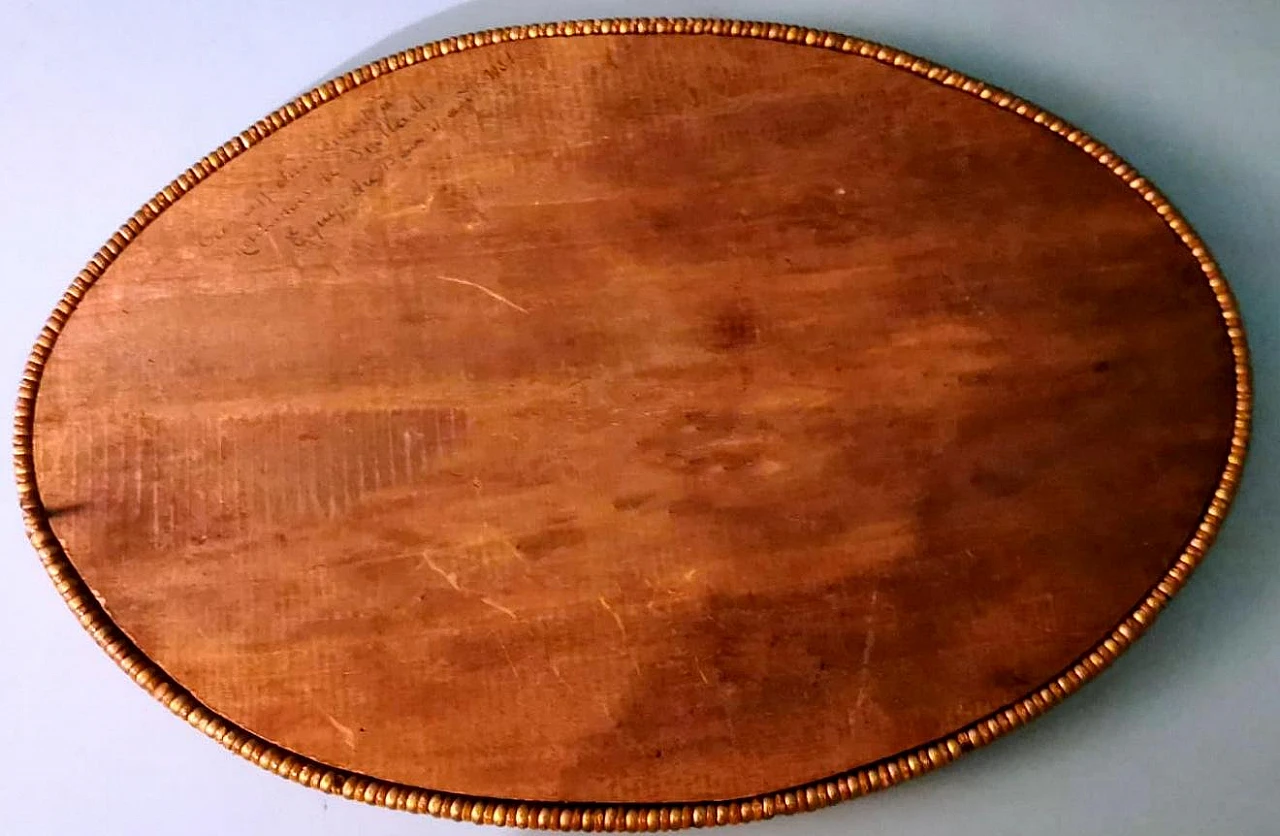
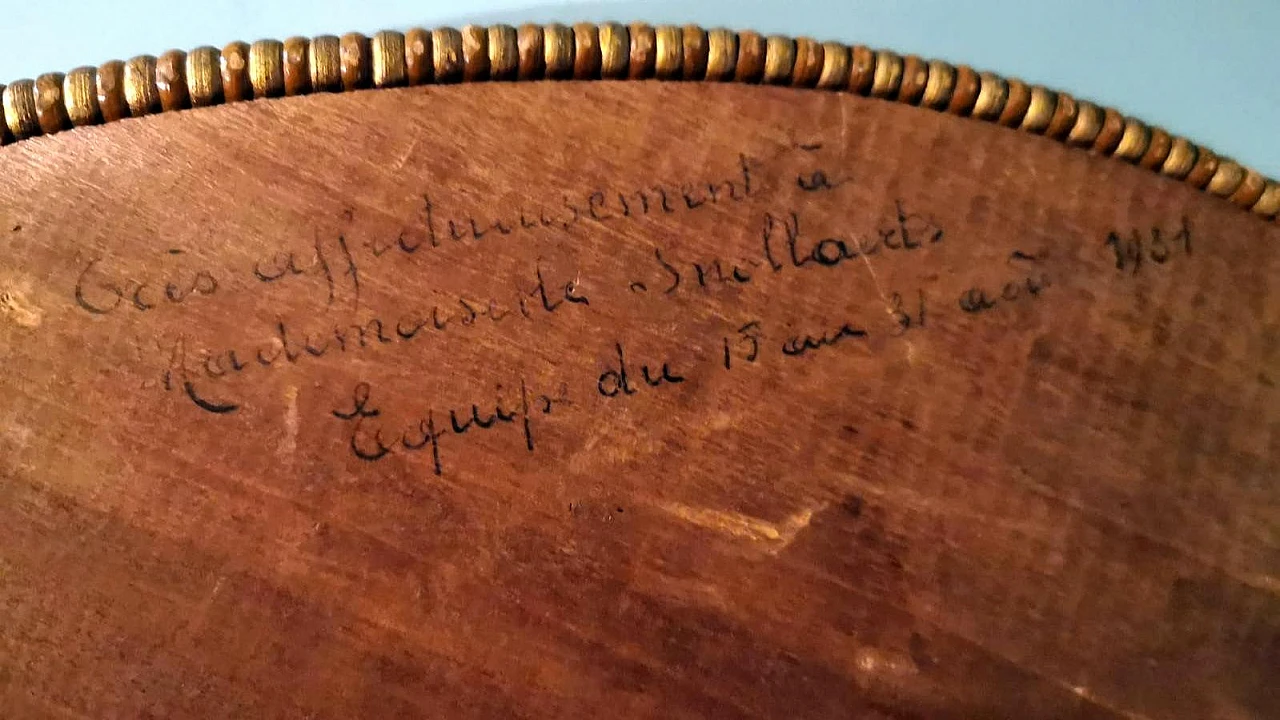




















This very unusual French tray has a wooden base and a rim made with fine wickerwork, featuring thin, alternately gilded strips, some of which still retain their gilding. The inner part of the tray is occupied by a beautifully painted oval glass on the back. The tray was created as a unique piece in 1931 to be given as a gift, as evidenced by the dedication on the bottom: "Affectionately to Mademoiselle Snollaerts. Team from August 15 to 31, 1931." The object was undoubtedly commissioned from one of the many craft workshops in the Montmartre neighborhood of Paris in 1931. The enigmatic dedication does not reveal the purpose or reason for the gift. Montmartre is a neighborhood located in the 18th arrondissement, known for its bohemian and artistic ambiance. During the late 19th and early 20th centuries, Montmartre was the heart of the Parisian art scene. Numerous artists, painters, sculptors, and craftsmen settled in the area due to its relatively low rents and vibrant creative community. These artists worked in close proximity, often collaborating and influencing each other. The presence of numerous ateliers and artisan workshops made it possible to produce custom objects. Montmartre's artisans were known for their skill in working with various materials and creating unique pieces. The area was home to artists such as Pablo Picasso, Vincent van Gogh, Henri Matisse, and many others. The image on the tray depicts a maiden dressed in historical clothing, with a background featuring branches with hanging red fruits, evoking the appearance of a "rain" of fruits. The maiden's attire, with its wide, ornate dress and hat, seems to recall a style from the late 18th century, probably from the period of the French Revolution. This type of hat, known as the "chapeau à la Henri IV" or "bicorne," was popular among aristocrats and the bourgeoisie during that period. The depicted plant looks like a weeping willow (Salix babylonica) or a tree with similar characteristics, with slender, pendulous branches. The red fruits may be an artistic addition to impart color and symbolism, rather than representing a specific tree. In fact, red fruits or berries can symbolize vitality, fertility, and abundance. The color red is often associated with passion, energy, and life itself. This shower of red fruits can therefore suggest a deep connection with nature and a cycle of life and rebirth. The painting may represent a celebration of nature and its bounty. The maiden under this rain of fruit could symbolize a lost or desired harmony between humans and the natural environment. There may also be a story behind the depicted scene, perhaps a local myth or legend, about a maiden blessed by nature or protected by a magical tree. The way the tree is depicted, with branches resembling rain, may recall the works of artists such as Gustav Klimt, who often used natural and decorative motifs in his paintings. Artists of the Art Nouveau period, such as Alphonse Mucha or Aubrey Beardsley, may also have inspired such a work with their predilection for sinuous lines and stylized natural elements. Additionally, the arrangement of the branches and fruits may follow a harmonious and balanced structure typical of Art Nouveau symbolist works. The tempera painting technique used could be the so-called "reverse painting on glass"; in this case, there is a particular brilliance and sharpness due to the smooth surface of the glass. The choice of tempera suggests attention to detail and a refined technique. Tempera is known for its brightness and durability, characteristics that could have been exploited to make the colors of the fruits and the details of the branches vivid. The fine wicker workmanship is very precise and meticulous; the wicker is made from rattan or guinea cane. For its production, the innermost part of the rattan cane is used, which is divided into very thin strips that can intertwine with each other in a series of very dense weaves, strictly handmade to achieve a very refined and high-quality mesh. The tray is in good condition. Measurements: width 54 cm, depth 36 cm, height 4 cm. For all our shipments, we use special packaging materials (wooden crates, styrofoam, etc.) to ensure maximum protection and safety of the objects.
ID: 4672-1722765966-98838
